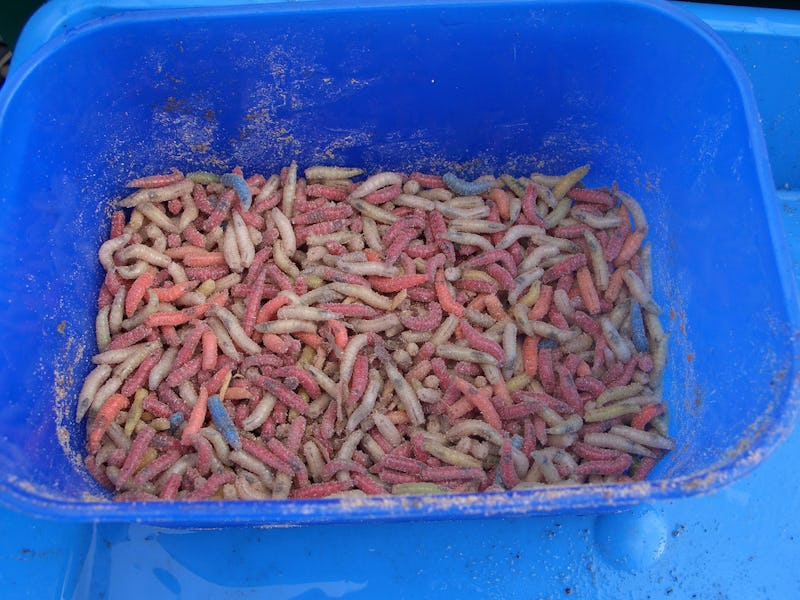Which Bug Is More Useful? Maggots vs. Leeches
We answer the age-old question of the superior spineless grub-thing.

In the weird sub-corner of medicine that is biosurgery, leeches and maggots are the It Grubs. Maggots are squirming in the spotlight — for the moment — because North Carolina State University researchers have engineered them to secrete human growth factors; leeches, if you go poking in certain corners of Brooklyn, never left. Let us smash these two spineless healers in the arena in the tradition of Batman v Superman or Discovery Network’s Animal Face-Off. In this battle royale of therapeutic wrigglers, who wins?
Healing factor
When bending maggots and leeches to our medicinal will, both involve applying the animals directly to a specific site on the body. Maggots chew at wounds that won’t heal; leeches are one of the oldest of old-school ways to let blood.
Maggots — specifically, maggot debridement therapy — can help, at least according to meta-analyses like those published in the International Journal of Infectious Diseases in 2014. A round-up of some 300 studies (most were small, in the tens of patients, though a few were randomly controlled trials), the results support the idea that ulcers and wounds healed faster when maggots eat the necrotized tissue. “A possible explanation of how maggots combat wound infection,” write the study authors, “is that the larvae can ingest wound bacteria and kill them as they pass through their digestive tract.”
Does modifying the animals, as the North Carolina State researchers did, bring anything to the table? It’s too early to say definitively, but having maggots that produce healing molecules — platelet growth factors — as they churn through dying tissue is an intriguing idea.
Historically, the leech has long been entwined in human history. Did you know that leech comes from some old Anglo-Saxon word that means “to heal”? We didn’t, either. John Hyson, a University of Maryland dentist, traced leech bloodletting back to the ancient Greeks, and determined leech therapy has worked for so long because the animals secrete an anticoagulant that keeps blood flowing. Though we’ve developed pharmaceuticals to do the same job — it’s tough to find what the FDA calls “live medical devices” in most medical practices — leeches still cling on; health insurer Aetna covers Hirudo medicinalis therapy in patients with “poor venous drainage.”
Winner: It’s close, but we’ll give it to the maggot.
Biological weirdness
Maggots, being the first stage in the life of a fly, exist for three to four days. They’re sort of like tubes of muscle with mouths, sucking down food until they cocoon themselves and burst out as flies.
Leeches are hermaphrodites — but just because they contain both male and female reproductive organs doesn’t mean they don’t copulate. They just have to, as one press release on leech hormones puts it, “align their reproductive pores.” After a process that takes five minutes, boom, leech fucking. The leech sperm blasts from one pore into the other leech, where the reproductive material tears like a spray of needles through the receiving leech until it reaches the ovaries.
Winner: The leech, hands down.
Growing for non-medical appeal
If you’re Robert Hicks, director of Philadelphia’s Mütter Museum, you raise a pair of leeches as pets. If you’re Glen Courtright, founder of the farm Enviroflight, you raise thousands of fly larvae in the hopes of producing cheap meal for fish, which then cheaply feeds us.
Ultimate victor: We’ll give this to the maggot.